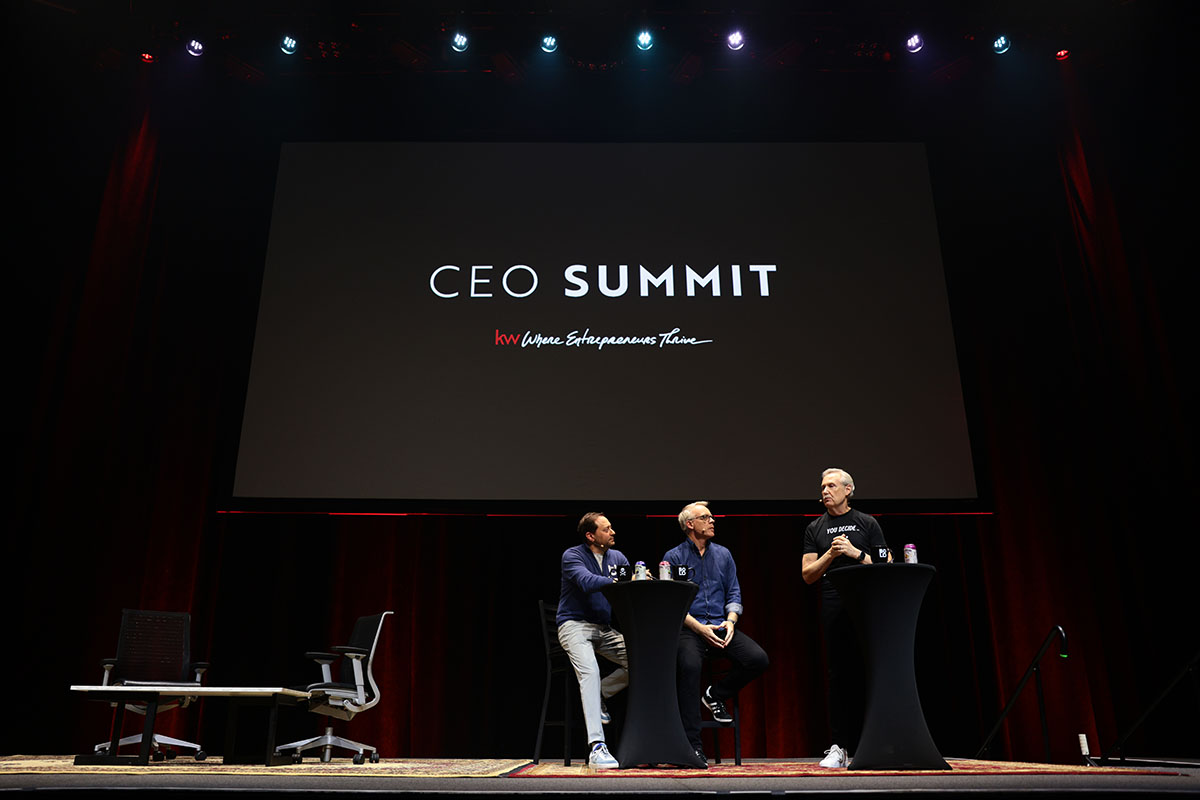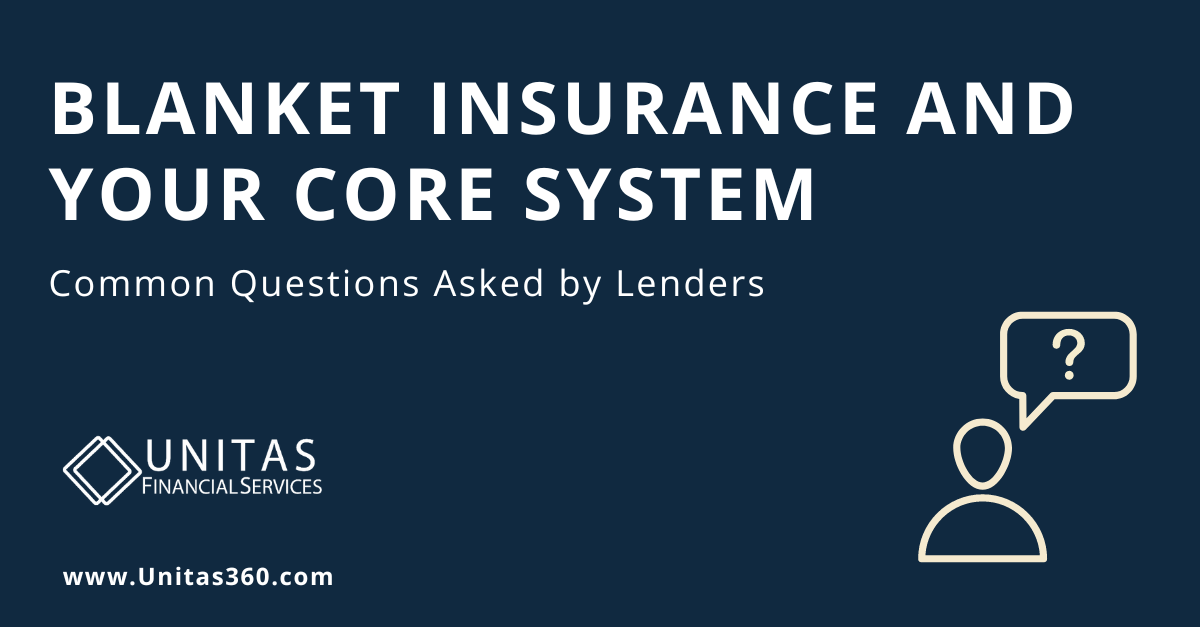
With buyers seeking greater assurance on a business’s quality and growth potential, preparation is everything for company owners looking to sell, says James Goold, partner at global law firm Taylor Wessing.
![]()

With buyers seeking greater assurance on a business’s quality and growth potential, preparation is everything for company owners looking to sell, says James Goold, partner at global law firm Taylor Wessing.
![]()
OCBC has announced a five-year collaboration with Disney, bringing special products and activities inspired by Disney, Pixar, Marvel, and Star Wars to its retail banking customers in Singapore, Malaysia, and Indonesia.
The partnership aims to help OCBC quadruple its new customer base in Southeast Asia by 2029.
This marks the first time a Southeast Asian regional bank is rolling out a comprehensive programme featuring branded card designs, marketing activations, and financial literacy content inspired by Disney characters.
OCBC customers will have access to products like rewards programmes with Disney+ Premium or Disney+ Hotstar subscriptions in Singapore and Malaysia, as well as Disney-themed merchandise.
Starting mid-2025, select OCBC cards and accounts will feature Disney designs and offer exclusive Disney premiums, such as limited-edition OCBC pins.
The collaboration officially kicks off with the launch of the OCBC MyOwn Account on 20 October, which will include Disney and Marvel-themed photo zones at OCBC’s Wisma Atria branch in Singapore.
Additionally, OCBC will offer financial literacy content young savers featuring Disney characters from “Wreck-It Ralph.”
These comics, available digitally and in print, will be accompanied by activity sheets and resources for teachers and parents to help engage young customers.
Over 100,000 copies will be distributed to students across 110 secondary schools in Singapore.
OCBC’s rewards programme will extend to select debit and credit cardholders, OCBC 360 Account customers in Singapore and Malaysia, and Young Nyala Account customers in Indonesia.

Sunny Quek, Head of Global Consumer Financial Services, OCBC, said,
“We are excited to be the first bank in Southeast Asia to launch Disney themed cards and offer customers special experiences inspired by Disney, Pixar, Marvel and Star Wars characters and stories. Disney characters evoke an enchanting and nostalgic emotional connection that resonates with the young and young at heart.
Collaborations like these enable us to attract new customers and bring to the market products and services that are not based on pricing or rates alone. I am therefore confident we will accelerate our acquisition of new to-bank customers across our Southeast Asia core markets in five years.”
Featured image: (From left) Alex Baillie (Vice President and General Manager, Consumer Products, The Walt Disney Company, South Asia), Vineet Puri (Vice President and General Manager, Disney Entertainment SEA, The Walt Disney Company, Southeast Asia) and Sunny Quek (Head of Global Consumer Financial Services, OCBC).
Bakeries are a staple in many communities, providing delicious treats for all to enjoy. Whether you’re a small, local bakery or a larger chain, it’s important to understand the risks that come with running a bakery and the importance of having insurance.
Insurance provides peace of mind to bakery owners by protecting their business from unexpected events that could cause financial loss. From natural disasters to accidents, there are many things that could go wrong in a bakery. For example, if a fire breaks out in the kitchen, the damage could be devastating, not just to the physical building, but also to the equipment and inventory. Without insurance, the financial burden of repairing or replacing the damaged property would fall solely on the bakery owner.
Additionally, bakeries face risks from customers who may become ill from consuming the products. Food liability insurance protects the bakery in the event that a customer becomes sick from eating their products. This type of insurance covers the cost of legal fees, settlements, and damages in the event of a lawsuit.
Another risk for bakeries is employee injury. Workers in a bakery may face various hazards, including hot ovens, sharp knives, and heavy equipment. Workers’ compensation insurance provides financial protection for employees who are injured on the job, covering medical expenses and lost wages. This type of insurance is mandatory in most states, but it’s important to understand the specific requirements and regulations in your area.

Cybercrime is also a growing concern for businesses, including bakeries. As more transactions are conducted online and personal information is stored electronically, it’s crucial to protect against cyber attacks and data breaches. Cyber liability insurance provides protection against losses resulting from hacking or other cyber-attacks. This type of insurance covers the cost of notification and credit monitoring for affected customers, as well as legal fees and settlements.
Finally, property insurance is important for bakeries as it covers the physical assets of the business, such as buildings, equipment, and inventory. This type of insurance provides financial protection in the event of theft, vandalism, or natural disasters. It’s important to have an accurate inventory of all assets and to keep this information updated regularly. This will ensure that you are fully covered in the event of a loss.
In conclusion, bakeries face many risks, both physical and financial. It’s important to understand the types of insurance that are available to protect your business and to choose a policy that provides the coverage you need. From food liability to property insurance, there are many options to choose from, and having insurance in place will give you peace of mind and help ensure the success of your bakery. Don’t wait until it’s too late to secure your bakery’s future. Contact Paradiso Insurance today at 860-684-5270 or fill out a form here to discuss your options and find the coverage that’s right for you!
img#bf_image-670e1439c83ab {
width: 1600px;
}@media screen and (max-width: 768px) {
img#bf_image-670e1439c83ab {
width: 100vw;
}
}
Deciding between leasing and financing a car is a common dilemma for many prospective car owners. This decision carries significant financial implications and can also reflect personal lifestyle choices. Whether you prioritize having the latest model or prefer the long-term benefits of ownership, you want to weigh each option’s pros and cons. Moreover, your choice can affect your insurance premiums and coverage needs, making it essential to consider all aspects before committing.
Leasing a car offers several advantages, making it an attractive option for specific demographics:
However, leasing also comes with its downsides:
On the other hand, financing a car offers distinct benefits:
However, financing also has its drawbacks:
Leasing is often the best option for younger professionals in their 20s to early 40s who have a steady income and enjoy driving new cars. It’s also well-suited for urban dwellers living in cities who drive less and prefer the convenience and status of a newer model. Additionally, leasing can be a good fit for individuals with a lifestyle preference for switching cars frequently and who may use the car for business, benefiting from tax advantages.
Financing for a car typically appeals to a few specific groups. Firstly, it’s popular among families or individuals in their 30s to 50s who plan to keep the car long-term and build equity. Secondly, it’s a good option for rural or suburban residents who drive longer distances and need the flexibility of no mileage limits. Lastly, financing is also suitable for those with a lifestyle preference, such as drivers who prioritize long-term savings, want to customize their car or plan to keep it beyond the loan term.
Before deciding whether to lease or finance a car, assess your driving habits, financial situation, and long-term goals. Contact your local insurance agent for personalized advice and explore insurance options for your needs. Check out our additional resources for more tools to calculate the cost-effectiveness of leasing versus financing.
Fight climate change and earn profits by investing in carbon credits, the innovative market-based solution that rewards businesses for reducing their carbon footprint

In this article, we will talk about how to invest in carbon credits. Diversification and asset allocation, in general, are key components of portfolio theory if you want to become an investor.
Carbon credit investing is becoming increasingly popular.
In fact, J.P. Morganrecently invested $500 million in timberland (P.S. it wasn’t for the wood).
Carbon credits are tradable permits that allow companies or individuals to offset their carbon emissions by investing in projects that reduce greenhouse gas (GHG) emissions.
Each carbon credit represents one tonne of CO2 or its equivalent GHG emissions that these projects have avoided or reduced.
Carbon credits aim to create a market-based mechanism that incentivizes GHG emissions reductions by allowing organizations or individuals to offset their greenhouse gas emissions while encouraging investment in carbon reduction projects.
From an investing standpoint, Carbon credits are an alternative investment like wine or real estate because of their illiquid nature and hard-to-value asset.
Many countries have adopted the use of carbon credits as a part of their climate policy framework.
Carbon credit investing and trading involves buying and selling credits, stocks, mutual funds, or ETFs that represent a reduction in greenhouse gas emissions.
It can allow investors to support sustainability efforts and earn a profit. There are numerous advantages and risks of investing in carbon credits.
And while the carbon credit market is fairly nascent compared to traditional stock and bonds, it’s an industry that is worth taking a closer look at.
Investing in carbon credits can have several advantages, including:
Carbon credits represent a reduction in greenhouse gas emissions, which can help mitigate the effects of climate change and global warming. By investing in carbon credits, you are contributing to a more sustainable future.
Carbon credits can be bought and sold in various markets, and their value can fluctuate based on supply and demand. If you invest in carbon offsets or credits that increase in value, you can earn a financial return on your investment.
Carbon credits provide a unique opportunity to diversify your investment portfolio. Because they are not directly tied to traditional financial markets, they can provide a hedge against market volatility.

While investing in carbon credits or companies that invest in the reduction of carbon credits can provide an opportunity for investors to support sustainability efforts and earn a profit, there are several risks associated with carbon credit investing, including:
The value of carbon credits can be volatile and influenced by various factors like regulatory, market demand, and economic conditions in carbon markets.
The rules and regulations surrounding carbon credit markets can change quickly, making it difficult to predict the future value of credits.
The carbon credit market is vulnerable to fraud, including creating fake credits or selling credits that do not actually represent a reduction of Co2.
Investing in carbon credits can expose individual companies and investors to reputational risks if they become associated with companies or projects that fail to meet environmental or social standards.
Carbon credit markets rely on accurate measurement and verification of emissions reductions, which can be challenging and subject to errors or manipulation.
Carbon credit markets can be illiquid, meaning that it may be difficult to find buyers or sellers of credits when needed.
If you are interested in investing in carbon credits, there are numerous ways to get started.
Ways to invest in Carbon Credits include:
Carbon capture, utilization, and storage (CCUS) is a technology that captures carbon dioxide (CO2) emissions from industrial processes, power plants, and other sources and stores it in underground geological formations, among other uses.
A few companies are involved in carbon capture technologies, including some publicly traded stocks.
Here are a few examples:
Carbon credit mutual funds are professionally managed investment vehicles that pool money from multiple investors to buy a portfolio of securities, including carbon credits.
The portfolio manager decides which carbon credit projects to invest in and manages the fund’s assets on behalf of the investors.
Another great way to invest in carbon credits is through Carbon credit ETFs (exchange-traded funds) are investment passively-managed products that expose investors to the carbon credit market. These funds invest in companies or projects that generate carbon credits through emission reduction initiatives, like renewable energy projects or energy efficiency programs.
ETFs are similar to mutual funds in that they invest in a basket of assets but are passively managed instead of actively managed like mutual funds.
Carbon credit futures are a financial instrument that allows investors to speculate on the future price of carbon credits.
Futures contracts are agreements to buy or sell an underlying asset (in this case, carbon credits) at a specified price and date in the future.
Investing in carbon credit futures involves taking a position on the future price of carbon credits, with the goal of profiting from price fluctuations.
For example, an investor may buy a carbon credit futures contract if they believe that the price of carbon credits will increase in the future. If the price does, the investor can sell the futures contract higher than they paid, realizing a profit.
Investing in carbon credit futures requires specialized knowledge and experience in futures trading and is generally not for beginners.
Carbon credit investment funds are investment vehicles that enable investors to invest in a diversified portfolio of carbon credits generated by various emission reduction projects worldwide.
These funds can invest in various projects, like renewable energy, energy efficiency, and carbon capture and storage initiatives.
The primary objective of carbon credit investment funds is to generate a return on investment while supporting sustainable development and helping to reduce greenhouse gas emissions.
These funds typically invest in verified and certified carbon offset projects, which means that the carbon credits they generate are real and can be used to offset carbon emissions.
Carbon credit investment funds can take various forms, such as mutual funds, exchange-traded funds (ETFs), or private equity funds. The investment strategy and portfolio holdings can differ from fund to fund, depending on the fund’s objectives, investment style, and asset allocation strategy.
One advantage of investing in a carbon credit investment fund is that it exposes investors to the growing carbon market, without needing specialized knowledge or resources.
Carbon credit investment funds can also provide diversification benefits to a portfolio and help investors to align their investment goals with their environmental values.
Investing in carbon credits can be a way to support and promote carbon reduction efforts while potentially earning a financial return, but it is important to approach it like any other investment; with caution and thorough research.
The amount of money required to invest in carbon credits can vary widely, depending on a range of factors, including market prices, minimum investment requirements, and the goals of the investor.
Currently, in global carbon markets, the price of carbon credits ranges from a few dollars to several hundred dollars per ton of carbon dioxide equivalent (CO2e).
Secondly, the minimum investment required to participate in carbon credit markets can vary depending on the platform or exchange used. Some platforms may require a minimum investment of several thousand dollars, while others may have no minimum investment requirement.
Finally, the level of investment will also depend on the goals of the investor. If an investor’s goalst the carbon emissions of a small business or personal activities, they may only need to purchase a relatively small number of carbon credits.
However, if an investor is looking to offset the carbon emissions of a large corporation or engage in more significant carbon trading activities, they may need to invest much more.
Real Estate Got Personal at Mega Agent Camp 2024, Where Thousands of Agents Convened for KW’s Midyear Learning Event
If you stopped by the story booth at Mega Agent Camp 2024, then you got a chance to listen in on agents from across KW talking about the different ways Keller Williams has changed their lives.
There are some amazing stories out there, like the agent from Louisiana whose market center stepped up when he needed a kidney transplant. We heard from the woman who started as an admin at her local market center while living in a shelter and in recovery from addiction, who’s now held nearly every position in her office. Then there’s the agent from Texas who at first didn’t think she belonged at MAC, until she realized it was where she needed to be to learn to think like a mega agent. Her strategy worked – and she hasn’t missed a MAC in 20 years.
As with every agent’s story, every Mega Agent Camp is unique. Here are some of our takeaways from MAC24. Have more to add? Share your thoughts in the comments below.

Once upon a time, CEO Summit was an invite-only affair. But in the same way that MAC is about helping you think like a mega agent – wherever you are on your real estate journey – CEO Summit helps you think like a CEO. (We even have a t-shirt for it!)
This year’s event opened with Gary Keller, Jay Papasan, and Jason Abrams talking about the concept of antifragility, first coined by economist Nassim Taleb. Gary, Jay, and Jason discussed how cycles of stress and recovery can help you become tougher – antifragile – on every level. Becoming antifragile in the areas that matter – mentally, physically, financially, and spiritually – enhances your capacity to weather change over time.
But getting the counterbalance right is key. When you set stretch goals that stress your systems, you also have to be intentional about your recovery periods. Or as Jay said, “If you don’t take regularly scheduled breaks, you’ll get an unscheduled one by default – and that’s called a breakdown.”
It’s important to look backward to understand how to move forward. The MAC Market Update provides perspective on where we’ve been, where we are, and where we might be going as an industry and a nation.
This year, Gary Keller and KWRI Chief Economist Ruben Gonzalez talked about how falling home sales historically lead us into recessions, while rising home sales lead us out of them. As the economist of choice for your clients, it’s helpful to know these three scenarios that show where the economy could be headed in 2025:
If you’re a KW® associate, you can log in to access the complete 2024 Market Update through Connect.
From building your database to mastering a MOFIR, every panel at MAC covers a different topic. Each panelist is asked to discuss a proven model or system they’ve implemented that’s made a major impact on their business, which is turned into a one-sheeter that sums up their unique plan of action.
As a KW® agent, you get exclusive access to all of the one-sheets from MAC panelists – even if you didn’t attend MAC! And while the one-sheets are a valuable resource, one of our takeaways from MAC is that being there to hear the details behind the strategy may be even more important when it comes to professional growth. Why? Because learning how someone arrived at a solution and solved a challenge in their business can help you do the same in yours. That’s how you really start thinking like a mega agent.
Lucky for you, you can take a deep dive into some of the strategies and insights of top agents in the KW Secrets to Success in Real Estate YouTube playlist, with exclusive interviews featured at MAC24.
If you were part of the KW MAPS Masterminds for Agents or Leadership, then you know: KW MAPS coaching can make all the difference in your real estate career. MAPS Masterminds are coach-facilitated roundtable sessions that go beyond surface-level information to dive into the specifics of your business and your personal Big Why. Breakouts are divided by role, and this year’s Masterminds were open to all agents, including those not currently enrolled in coaching.
Communicating value to clients showed up as a key theme in this year’s breakouts. Participants in the Buyer’s Agent Mastermind discussed MAC speaker Phil M Jones’ suggestion for starting conversations about value with the question, “What’s your experience working with a professional real estate agent?” It was a mindset shift for a number of agents, who realized the framework could help them lean into the value of the expertise and services they offer, and naturally differentiate them from the competition.
Phil also says asking good questions in the sales process helps you uncover the “why” behind a client’s needs and actions. When issues arise, you can bring people back to their “why” to help them power through challenges and demonstrate that you understand their bigger mission – just like a great MAPS coach can do for you.
Branding expert Rory Vaden dropped this piece of knowledge during his entertaining presentation at MAC24: The higher the requirement for trust, the more important it is to have a personal brand. Why? Rory’s research shows that two-thirds of Americans would be willing to spend more money on products and services with companies whose founders have a personal brand that aligns with their values. In short, if your brand communicates who you are and what you do well as a real estate professional, people who resonate with your message will be drawn to work with you.
When it comes to building your brand online, Rory recommends building trust by sharing your wisdom through your blog and social media, starting with a list of 52 questions – one for every week of the year – that your ideal audience would want to know the answers to. It’s an authentic way to demonstrate your expertise and show potential clients that you’re uniquely positioned to solve their problems.

While the real estate industry may shift, former KW CEO Mo Anderson and mega agent Vanessa Pollock made it clear that KW’s culture of caring, sharing, and giving never changes. At this year’s Cultural Summit, Mo and Vanessa, along with KWRI’s Wendi Harrelson and John Clidy, introduced the audience to the newest KW® Cultural Ambassadors, who serve as cultural standard-bearers in their market centers and regions.
KW® Cultural Ambassadors are nominated by their peers for modeling the culture of KW at the highest level. Agent Kim Nishizaki from the Florida – South region was among those new ambassadors asked to share their story at MAC24. Kim suffered a stroke in 2021. While she was fortunate not to sustain any long-term disabilities, the experience changed her life and shifted her mindset toward one of servant leadership.
Kim’s stroke led her to reflect on the strain of enduring hardship while having to work and pay the bills. In response, she founded H.U.G.S., a group that provides meal trains, care baskets, care calls, and more for associates in her market center. She says that while the idea behind H.U.G.S. is simple, it helps agents feel seen and loved, and their market center feels more like a family. And H.U.G.S. was launched, other agents have started instituting similar programs in their market centers.
As Mo said, that’s the true impact of embracing a culture of caring, sharing, and giving.

Get in on lively main stage conversations with top-producing agents from across KW, plus keynotes and events that will empower you to build and grow the business of your dreams.
Register Now
Payments blockchain Fuse has announced Charge, the first Web3 merchant bank with a broad range of payment solutions for crypto and fiat. Charge will provide a full suite of services for businesses operating in the blockchain industry, from payments to invoicing.
A first-of-its-kind innovation for the crypto sector, Charge offers low transaction fees of just 0.5%, making it easier to accept payments, generate invoices, and manage cross-border transactions. In doing so, Charge breaks new ground as the first non-custodial Web3 merchant bank.
Charge is designed for small to medium businesses (SMBs). It makes it easy for clients to transact in multiple cryptocurrencies and fiat, removing barriers to international commerce. As a non-custodial payment solution, Charge does not require a banking license to operate. Clients retain full ownership of their assets at all times.
Charge provides a flexible and user-friendly banking service for SMBs operating at the intersection of Web3 and Web2, including crypto startups and e-commerce stores. It features full API support, enabling developers to fully integrate Charge into their existing tech stack. Robust security features empower Charge clients to maintain complete oversight and control of their assets.
Fuse CEO Mark Smargon said: “Advances in Web3 infrastructure and tooling have made it possible to experience digital banking onchain, complete with neobank-tier products and services. Charge combines these innovations into a single platform that enables merchants to enjoy the benefits of non-custodial payments and invoicing, coupled with a fiat off-ramp for seamlessly moving assets to the traditional financial system.”
Many businesses and consumers use digital currencies for cross-border payments and e-commerce transactions. However, issues around high fees, security, and ease of use have hindered broader adoption. Charge aims to address these challenges by offering a comprehensive, non-custodial solution that works seamlessly with existing fiat systems while leveraging Web3’s flexibility.
Web3 payments are expected to reach a market size of $3 billion by 2025, with a CAGR of 40%. Over 60% of businesses report being willing to accept crypto payments if the process were simplified and secure. Charge will accelerate this trend by forming a vital component of the blockchain payment industry.
Charge is pioneering a new business model by applying crypto-economics around merchant reputation and solving usability, privacy and trust issues preventing mainstream Web3 payments adoption.
About Fuse
Fuse is a layer 2 blockchain that offers fast, cheap, and borderless payments with stablecoins and DeFi building blocks. It enables businesses to build, integrate, and use blockchain technology to enhance mobile, e-commerce, loyalty, and branded stablecoins.
Learn more: https://www.fuse.io
 Core banking systems integrate with and have become essential to most of the services modern lending institutions provide. When it comes to loan servicing, your core system is often the conduit through which the essential process of insuring collateral portfolios is performed. Maintaining appropriate insurance coverage is so important that lender insurers have developed high-tech software that interacts with a lender’s core system to facilitate that coverage. With good reason, lending managers and executives are acutely concerned with how well an insurance process will work with the institution’s core system. For that reason, when discussing Blanket Portfolio Insurance, lending executives often ask me the following questions:
Core banking systems integrate with and have become essential to most of the services modern lending institutions provide. When it comes to loan servicing, your core system is often the conduit through which the essential process of insuring collateral portfolios is performed. Maintaining appropriate insurance coverage is so important that lender insurers have developed high-tech software that interacts with a lender’s core system to facilitate that coverage. With good reason, lending managers and executives are acutely concerned with how well an insurance process will work with the institution’s core system. For that reason, when discussing Blanket Portfolio Insurance, lending executives often ask me the following questions:

Workers’ compensation insurance can provide wage replacement and medical benefits for employees that are injured on the job. Our talented team has access to numerous workers’ compensation carriers with an extensive appetite.
Sign up to our Bigfoot Portal HERE!
The best news is that you don’t need any coding or design skills to get professional results from this premium WordPress theme – you can leave that to us.
A wonderful serenity has taken possession of my entire soul, like these sweet mornings of spring which I enjoy with my whole heart. I am alone, and feel the charm of existence in this spot, which was created for the bliss of souls like mine. I am so happy, my dear friend, so absorbed in the exquisite sense of mere tranquil existence, that I neglect my talents. I should be incapable of drawing a single stroke at the present moment; and yet I feel that I never was a greater artist than now.

When, while the lovely valley teems with vapour around me, and the meridian sun strikes the upper surface of the impenetrable foliage of my trees, and but a few stray gleams steal into the inner sanctuary, I throw myself down among the tall grass by the trickling stream; and, as I lie close to the earth, a thousand unknown plants are noticed by me: when I hear the buzz of the little world among the stalks, and grow familiar with the countless.
<div class="row">
<div class="col-xs">
<div class="box">
<div class="row">
<div class="col-xs">
<div class="box">auto</div>
</div>
</div>
</div>
</div>
</div>I am so happy, my dear friend, so absorbed in the exquisite sense of mere tranquil existence, that I neglect my talents. I should be incapable of drawing a single stroke at the present moment; and yet I feel that I never was a greater artist than now.
A wonderful serenity has taken possession of my entire soul, like these sweet mornings of spring which I enjoy with my whole heart. I am alone, and feel the charm of existence in this spot, which was created for the bliss of souls like mine. I am so happy, my dear friend, so absorbed in the exquisite sense of mere tranquil existence, that I neglect my talents. I should be incapable of drawing a single stroke at the present moment; and yet I feel that I never was a greater artist than now.